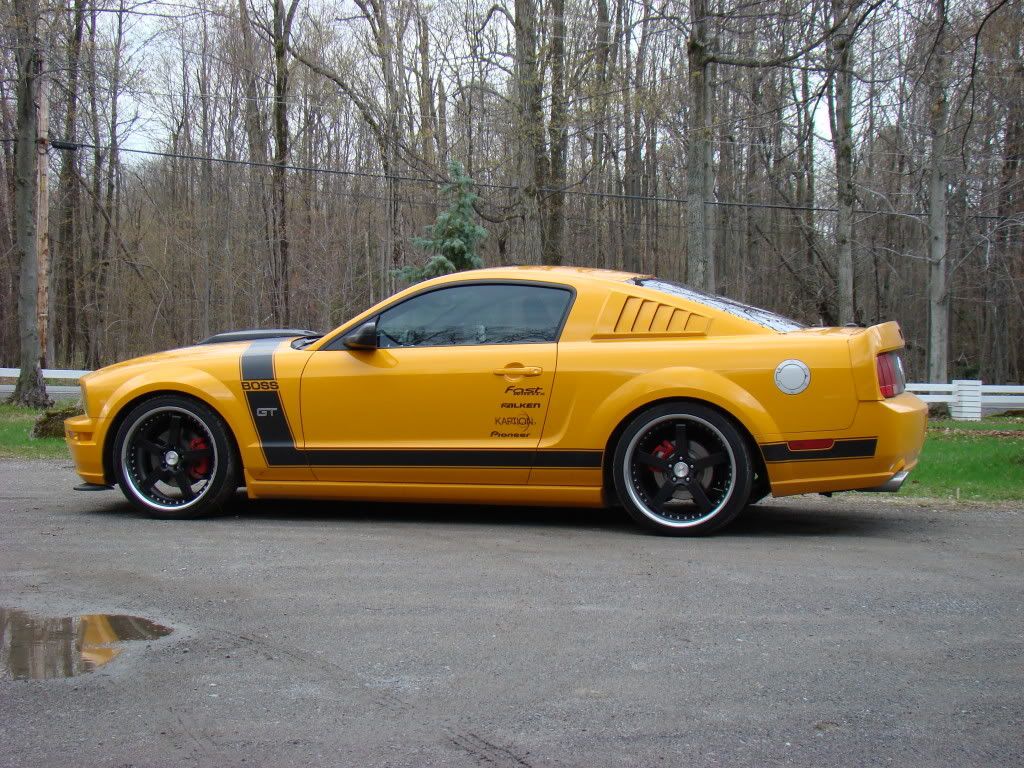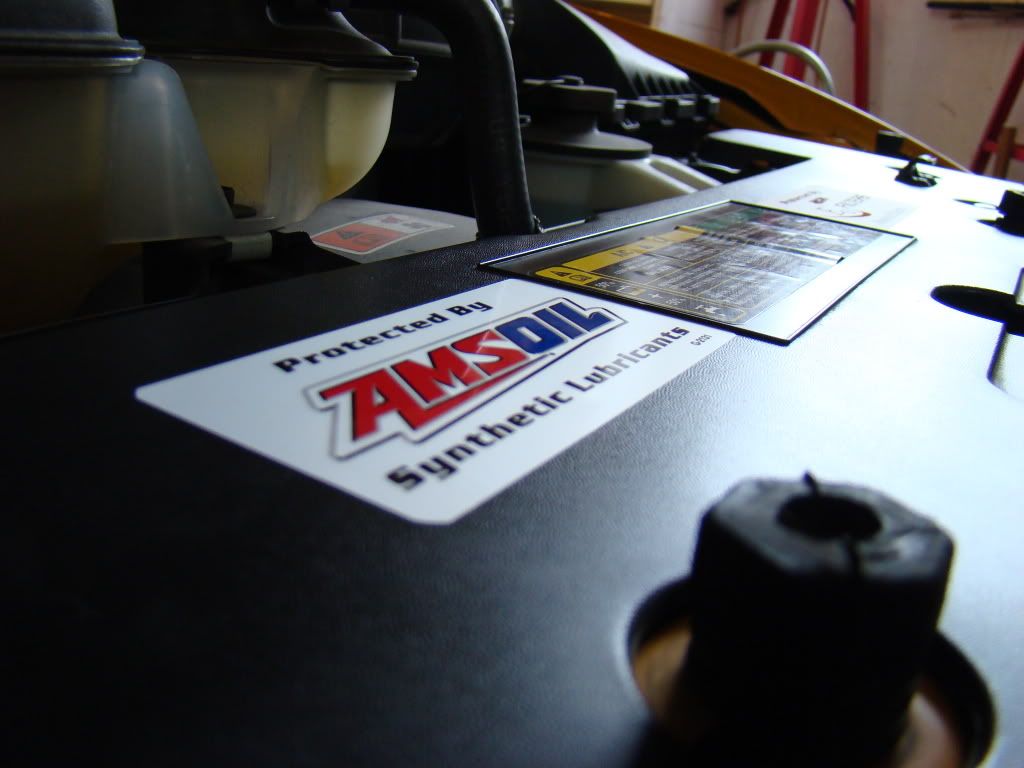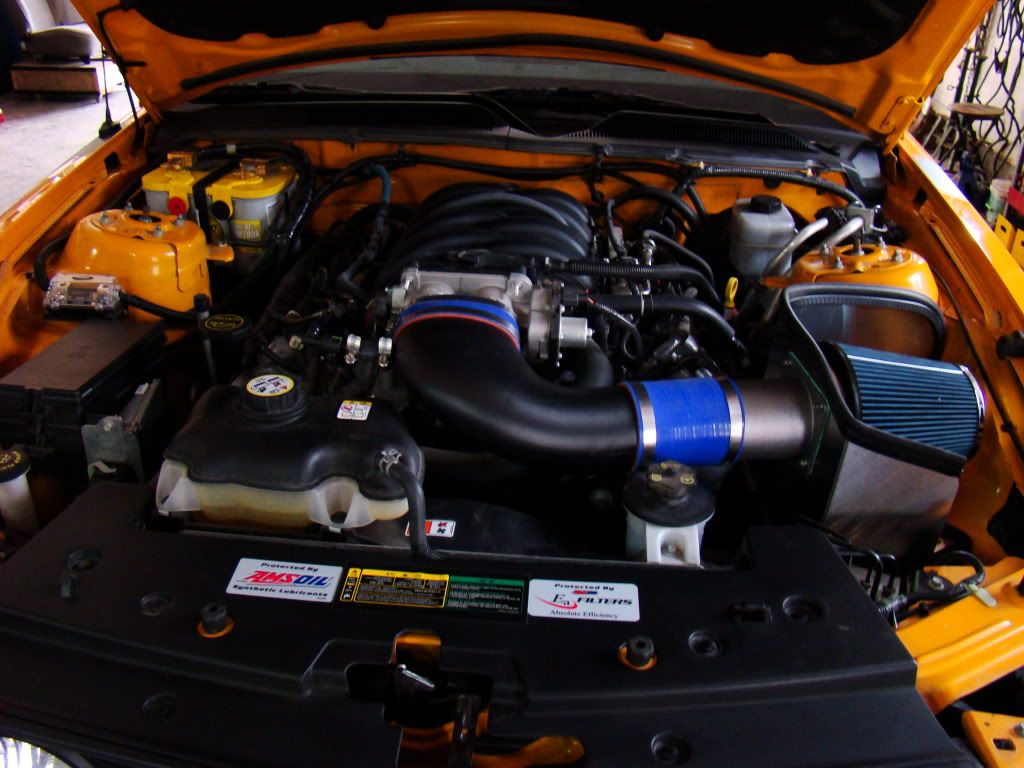We sure love our cars eh, the shiny paint, gleaming chrome, thunderous exhaust…and the fact that it doesn’t start in the spring?
.
It can happen to the worst of us, that’s because the best of us store our cars properly. It’s not uncommon to take the cover off in the spring and find a few issues. Things like gummed up fuel, rust spots that magically doubled over the winter, pitted chrome mags and even electrical connections and seats that a mouse chewed through. Don’t laugh, it happens!
.
Last week I prepared this ’07 GT for storage. It sleeps from November-ish till April-ish and with this kind of care, it will last many many years.
.

.
This Mustang is already a show-stopper. It’s awesome Grabber Orange paint with the BOSS decals, the 20″ custom mags, suspension and exhaust, and of course a selection of modifications by us over here at Woods Racing make this motor vehicle a work of art. But of course, it doesn’t stop there. Proper maintenance is the key to keeping this beauty alive and we put it through it’s carefully selected program.
.
During regular season, or “summer” as we may call it, this Thoroughbred runs on Amsoil fluids tied with an Amsoil EAO filter. This keeps the engine running as efficient as it should and prevents any unwanted in-motor gunk. Especially with the Steeda CAI, Ford Racing exhaust and the computer tuned by Woods Racing via an SCT X3, it’s important that the engine is running on a high quality synthetic like the Amsoil 0w20 100% synthetic motor oil. To keep the HP to the pavement, you need to start inside. A fresh oil change was done and will be done again after winter before bringing the vehicle out. You do not want to have used oil sitting and separating in the bottom of the engine because when it comes time to start your baby up in the spring, you need to be sure it’s not going to do any damage, after all, starting a car is the worst thing you can do to it.
.

.
Before it went away, we brought it into the shop for the winterization process. First off, the car will be stored inside in a heated garage with a car cover which is a good thing. Ice and snow can do very bad things to a paint job, and let’s not even get started about the under-body damage that can occur.
.
We cleaned the car with a good washing with Mother’s California Gold soap, dried it all up and brought it inside the shop. After it was dried completely, we hit it with the quick detail. A good option is a full wax/claybar or other type of option, but since this car is well kept during the on-season, it wasn’t needed. It’s important that the paint is clean before it goes away…those little pits and dirt marks can leave a nasty stain after 5-6 months away.
.
The mags we’re also treated, a good way to prevent pitting of chrome and other metals is pretty basic…keep it clean. These are custom rims from Fast Wheels and add a spectacular look to the car. We want to keep it that way.
.
The engine bay was cleaned and is often a forgotten or a skipped part of prepping a vehicle for storage. I can’t under estimate the value of cleaning an engine bay. It’s true, a clean engine is a happy engine. An easy way to help corrode electrical connections and wiring is to leave em dirty. This can cause headaches in the future. Bits of oils, dust, dirt, road grime can wreak havoc on an engine bay. So hit it with the Armour All boys, keep it clean!
.

.
As for the interior. Make sure you get that spilled coffee that dripped down beside the center console and be sure to vacuum those french fries that fell between the seats…you do not want to see what those may look like in 6 months. Treat the leather if it has it and don’t be shy with the window cleaner, especially if the owner smokes in the car. Window’s can get stained up and become yellow and glazed…oh, and don’t forget to clean the rear view and third brake light!
.
We rubbed all the seals with Amsoil’s silicon grease and treated all the joints and latches with Amsoil’s MP metal protector. This prevents cracking of rubber and keeps all the moving parts quiet and proper. Be sure to clean the area’s you can’t always see such as where the trunk hinges connect to the body and where the fuel tank latches on. These are places that are often overlooked and it’s a favourite spot for our nemesis named rust to multiply like cancer.
.
An under body inspection and greasing of the fittings was completed. Even though this is a newer car in great shape, you never know what you can find. This is also a good time to check the brakes, exhaust and other suspension components. If you know that something is wrong, it’s good to know so you can save up over winter for anything you might need come spring time. Speaking of which, this is also a good time to speak to your performance adviser. If you’re looking to modify, building a plan is key.
.
Now that the outside and inside, latches and seals, engine bay, paint and windows are all good to go we continued with the diagnostics. Now, you’re average speed junky may not have the equipment to do so, and it’s not as important as the other things mentioned above, but while the car was here we plugged it into our mactools taskmaster. We found a couple of codes that weren’t enough to cause a check engine light, but something to pay attention to nonetheless. As for now, it can be left as is, but come spring time we will address the issues and keep the car as BOSS as it is.
.
We’re almost done with our prep. Now is the most important step. FUEL STABILIZER my friends, use it, love it, cherish it. Gasoline, no matter what our…*ahem*…trusty friends…at the petroleum companies say, fuel doesn’t last. Fill up the tank, put the correct amount of stabilizer in and you’ll be happy to hear your engine purrrrrr in the spring. Just because you can’t see it, doesn’t mean it can’t rust. Condensation inside the tank, fuel that fails, gummed up filters and lines…all a recipe for disaster. We used Amsoil’s fuel stabilizer to keep this one safe.
.
We pumped up the tires an extra 10psi each and we were pretty much set! We delivered the car to the garage, and from there, the battery will be either unplugged and/or put on trickle charge. The car will be covered up and will have a good nap until the springtime!
.
If you follow this method, you’re pretty much guaranteed a fresh start in the spring. We spend lots and lots on our cars, spend a few bucks and a few hours to put em away correctly. There will be no bigger reward!
.


.

.
For more information about the products we chose for this winter storage, feel free to contact us or CanadaSynthetics.ca for all your synthetic lubricant needs!
Nov 15th by Bannon







